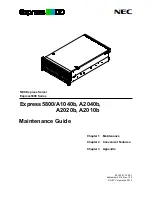
• Does the server power on?
• Does the server complete POST?
◦ If not, then what do the server LEDs indicate? Which LEDs are illuminated? Which LEDs are
illuminated but not flashing? Which LEDs are flashing and at what rate are they flashing? What
color is the LED? Are LEDs flashing in unison?
◦ Is video display available?
◦ If server completes POST and video is available, are there any POST error messages? Record the
text of the POST error message as displayed.
• Does the server successfully boot an operating system or hypervisor? If not, does the server display
any of the following symptoms and at what point did the following symptom occur?
◦ An uncorrectable machine check exception
◦ Stop error or blue screen (Windows)
◦ Purple diagnostic screen (Linux)
◦ Linux kernel panic
◦ A system “hang”
◦ A system “freeze”
• If the issue occurs after an OS is installed:
◦ Does the issue occur when a new application is loading?
◦ What symptoms did the server display when the server malfunctioned? (For example, did the
server reboot? Were there LED codes, health logs, or messages on the screen?)
• Are any indications present that show that the malfunction was reported as a memory error, PCI error,
or so forth?
The processor now contains the memory controller and PCI Express controller, so faults in other areas
might be attributed to a processor malfunction.
• When did the issue occur? Record exactly when the issue happens (include the date and time). If it
happens more than once, keep a list of all symptoms for each occurrence.
• What events preceded the failure? After which steps does the issue occur?
• What has been changed since the time the server was working?
• Has hardware or software been recently added or removed? If so, were the appropriate settings in the
server setup utility changed, if necessary?
• How long has the server exhibited issue symptoms?
• If the issue occurs randomly, what is the duration or frequency?
• What failed based on the iLO Event Log or the IML?
16
Troubleshooting preparation
















































